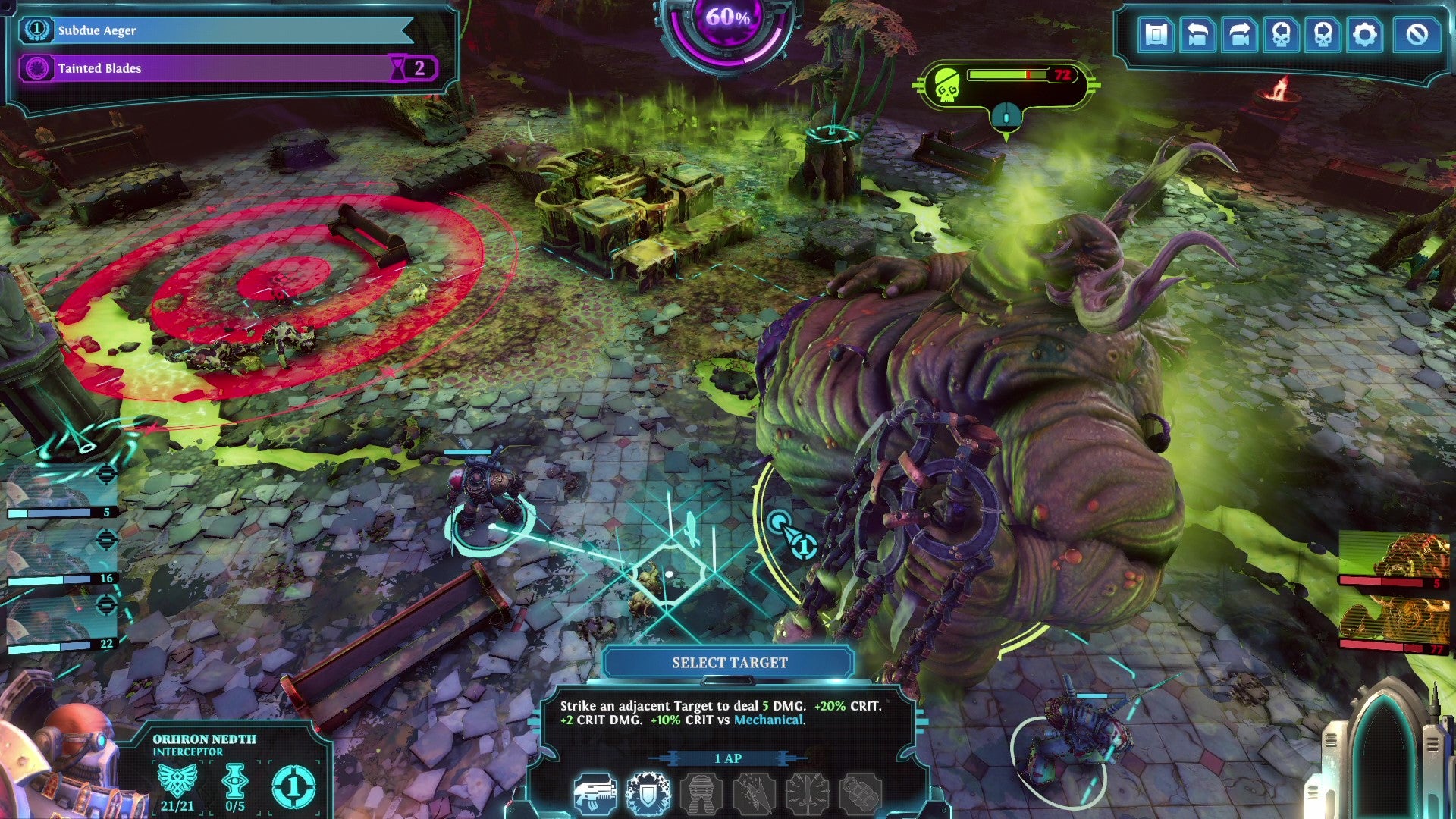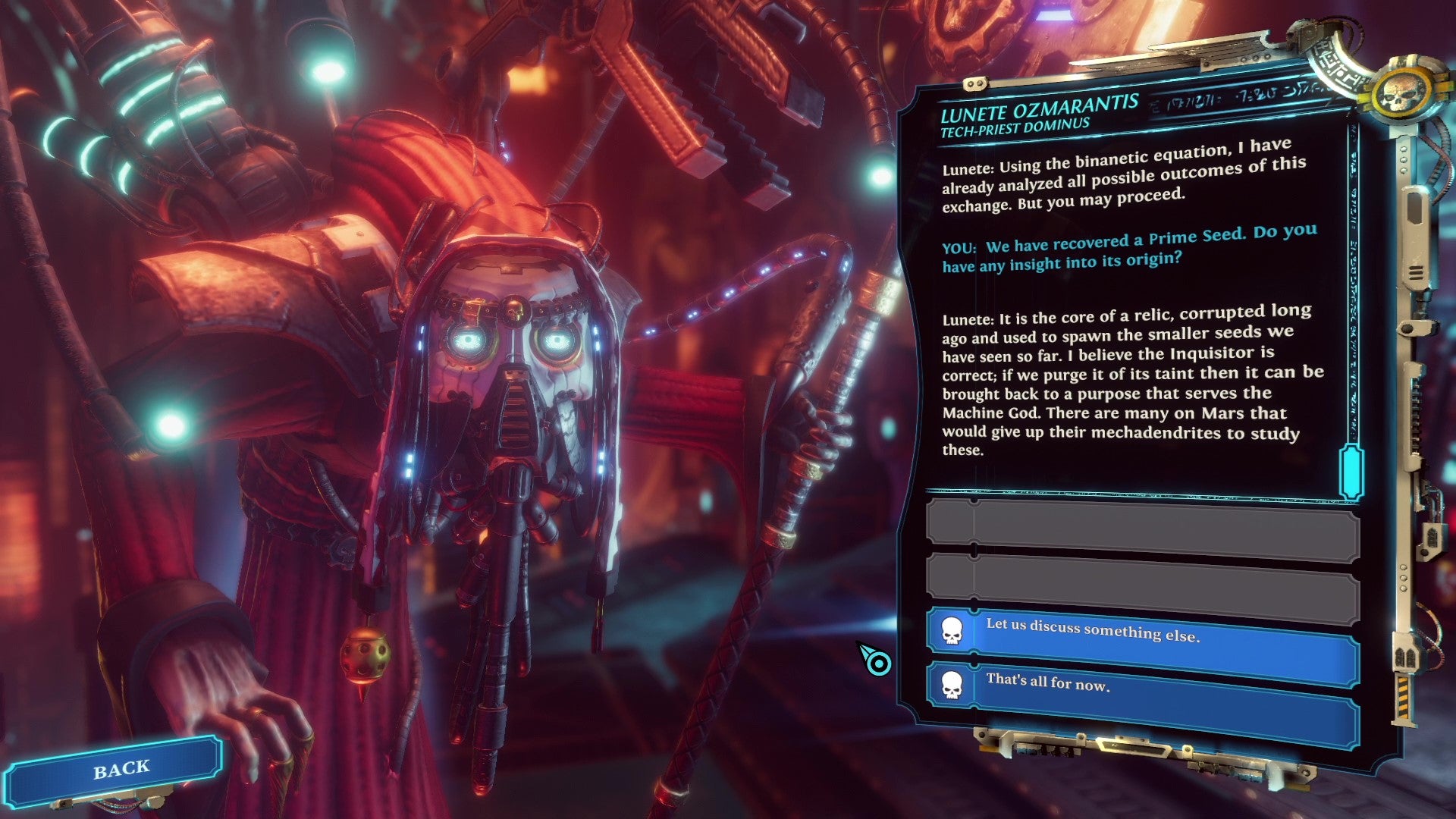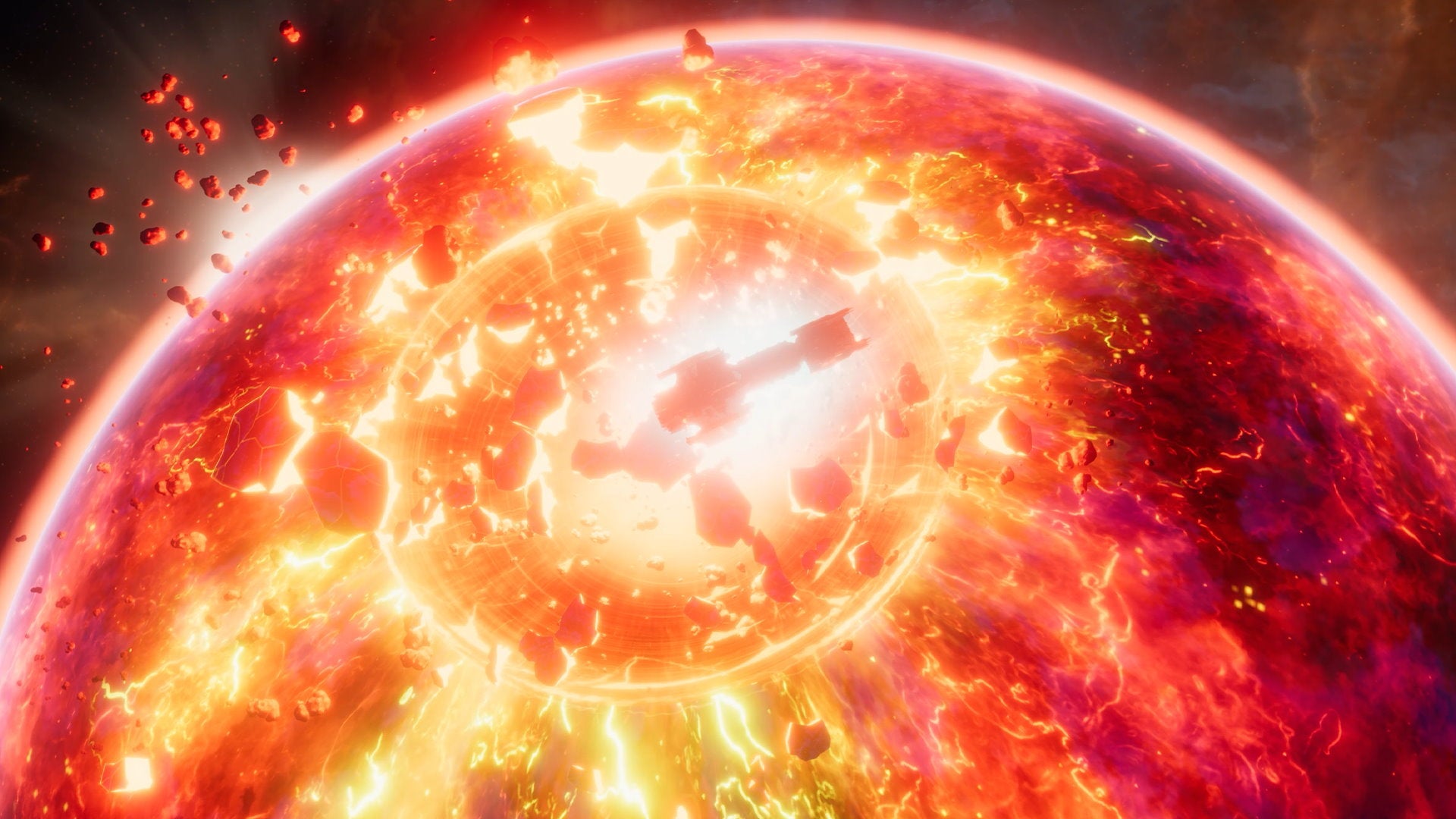I’ve played a curated, two hour slice of Warhammer 40K: Chaos Gate - Daemonhunters, and I’m keen to play more. As speedy as my sword boy felt in those moments, though, at other times I felt compelled to move forward at a crawl. When I asked creative director Noah Decter-Jackson whether I was just being too cowardly, he hedged his bets. Other turn-based strategy game comparisons are available, but the simplest and easiest way to describe Chaos Gate is something like ‘XCOM in space with tanky supersoldiers, no miss-chances and an emphasis on aggressive melee combat’. I’ve already written up an overview, which pairs nicely alongside Rick Lane’s big interview with Decter-Jackson, so here I’m going to get a little more into the plague-infested weeds. Admittedly, I’ve only been amidst those weeds for two hours, in far from ideal conditions. Some of my upcoming misgivings partly stem from jumping into early game missions with an unfamiliar squad, packing unfamiliar abilities. It’s like leaping into the middle of someone else’s Slay The Spire run and trying to figure out how some other chump’s combos are supposed to click together. That lack of familiarity introduces friction, but not representative friction - I’m just mentioning it to highlight how the waters were muddied from the off. Add in a dose of latency problems, occasional stuttering from accessing a build running on a remote PC (plus an unfortunate late-session crash) and those waters start looking murky. All that said, there are definitely elements of Chaos Gate that I’m going to find frustrating, regardless of any technical hitches. This is a game about super beefy space boys charging through hordes of gribblies, with an admirable commitment to aggression. You’re rewarded for charging into the fray, thanks to heavy hitting melee attacks and action point refreshes for special executions, but if you’re anything like my cowardly self then you might find that momentum vanishes when you’re not actually in combat. For the first half of my session, I couldn’t help but fall into that XCOM shuffle, always moving up under the watchful (and occasionally even overwatchful) eyes of Knights with remaining action points. There were roaming patrols of Cultists and Chaos Knights to watch out for, and XCOM has trained me to be hyper vigilant about not provoking more than one goon patrol at once. It’s a dynamic that incentivises putting a lot of thought into movement orders that won’t matter 90% of the time, but where a careless sprint into open ground can still prove disastrous - or at least, so I assumed. Somewhere around the midway mark of my demo, I accidentally ordered one of my massive, heavily armoured Knights to spring out onto a raised box in the middle of a firefight, leaving him completely exposed to half a dozen attacks. It took the combined attention of every enemy to bring him down, but then I just… picked him back up again. Your surviving soldiers can revive a fallen Knight, plonking them back on their feet with 50% HP and immediate battle readiness. I knew this, but I hadn’t really thought about its significance. I realised I’d been swaddling my squaddies, in that I’d been far too reluctant to leave them exposed. From that point on, I became more cavalier, making liberal use of each and every soldier’s ability to sacrifice one action point each turn in return for a pip or two of temporary armour. I still didn’t get to the point where I could feel confident about charging out of cover, but I saw how I might get there. I suspect I won’t be the only one who has to be cajoled out of cagey movement. Increased robustness calls for an interesting shift in mentality, but it does come with a trade-off. I didn’t experience the same moment-to-moment tension of XCOM, where an incoming flanking shot on a vulnerable unit frequently shoves my heart into my mouth. Excitement simultaneously leaks out from another direction, too: when every shot is guaranteed to hit, there’s little reason to hold your breath. When I put all that to Decter-Jackson, he told me they’ve built the tension more around the “resilience of your knights over the long term”, seen as each Knight can only get knocked down a certain number of times each mission. “Avoiding that critical hit is the one thing that I think the player is gonna wanna focus on”, he said, though compared to XCOM each situation will feel “a bit more lenient”. The idea is that tanky soldiers and a lack of miss-chances give you room to take control of a situation, but you’ll also need to adapt to changing circumstances whenever you or your enemies trigger a warp surge. These can summon a fresh wave of reinforcements, for example, or coat your commandos with a particular flavour of Corruption. The tankiness in particular amounts to a pronounced change in mindset, which Decter-Jackson agrees you could fairly call “attritional”. Based on the roughly one and a half games of tabletop Warhammer I’ve played at a pal’s house, that focus seems fitting. It doesn’t mean I’m going to like it. Nor is that my only gripe. Decter-Jackson was keen to emphasise how they’ve tried to support players who want to sneakily tip-toe around patrolling squads, like I did, but I suspect he might have been over-egging the player-driven pudding. He alluded to ticking timers and potential reinforcements that encourage a swift push forward, but for me the real allure of recklessly charging between fights will be cutting down on movement admin. Unlike XCOM, the kicker with Chaos Gate is that you have to wait for each individual soldier to finish jogging around before you’re allowed to move the next one. That’s an unfortunately fundamental limitation of their code, Decter-Jackson told me, though he did stress that you don’t have to wait for enemies to shuffle about individually if they’re off screen. Decter-Jackson also mentioned there will be options to speed up enemy attack animations, which I found myself longing for in my final confrontation. I was up against one of the special boss fights, where you’re plunged into an arena with a big nasty Warhammer Name and environmental hazards - in this case, rivers of corrupting bile. I don’t know who Aeger the Benevolent is, but I can tell you that by default he takes an awfully long time to swing his skull flail. Even with speedier swinging, though, that boss fight would have been the weakest part of my preview, because it turned into a war of attrition I gradually realised I was losing. When that crash came along and cut my session short, I couldn’t help but feel relieved. I’m aware all of that sounds resoundingly negative, which is perhaps unfortunate when I’m genuinely looking forward to getting my hands on the game proper. My hope is that I’ll have a better time by leaning into that cavalier, swashbuckling style from the start - especially once I’m rolling with an evolving squad where I get to choose every new ability, and have a better shot at understanding how all my capabilities knit together. This short session also completely skipped any messing around with that all important strategic overlayer, pivotal to XCOM, where gunning for a specific objective can imbue an otherwise mundane mission with tension and purpose. Decter-Jackson and I talked briefly about balancing around disaster states, where the player can find themselves in a situation where it looks like the Bloom is set to sweep across the universe, only to bail themselves out with a desperate blast from Exterminatus (see above), a doomsday weapon that can eradicate every pesky plague plant that’s taken root in a system. It sounded like a clever way to encourage a comeback, rather than a rage quit. The bottom line is that without playing more, I can’t tell to what extent my preview frustrations stemmed from a mixture of inexperience, impatience or unwarranted personal cowardice, or whether these things will stymie even the most fearless space grunt. Fortunately, we needn’t wonder for long, as Warhammer 40K: Chaos Gate - Daemonhunters comes out on May 5th.





